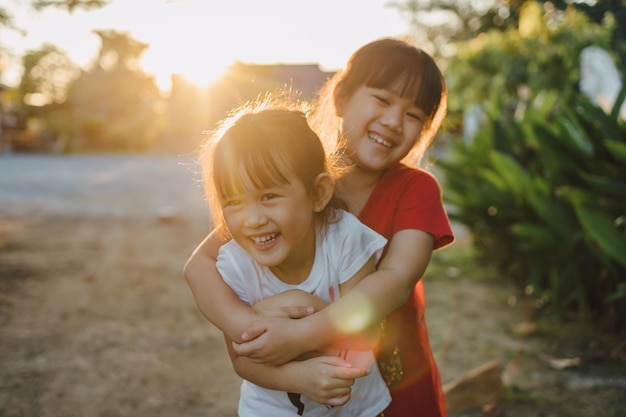Leadership is an ever-evolving art that requires continuous growth, adaptability, and a keen understanding of oneself and others. Leaders often seek guidance and support to navigate their challenges in pursuing success. It is where the transformative power of coaching, counseling, and mentoring comes into play. These invaluable practices provide leaders with the tools and insights needed to excel and pave the way for personal and professional growth like never before.
This blog post delves into the profound impact of coaching, counseling, and mentoring on leadership development. We explore how these effective approaches empower individuals to unlock their potential, navigate obstacles, and achieve unparalleled success. Whether you’re an aspiring leader or a seasoned executive, join us as we uncover the remarkable effects of coaching, counseling, and mentoring in fostering leadership excellence.
From unleashing the untapped potential to honing critical skills, navigating complex decision-making, to fostering a positive organizational culture, the impact of these practices is far-reaching and profound.

Enhanced Self-Awareness and Personal Growth
Self-awareness is a cornerstone of effective leadership, allowing individuals to understand their strengths, weaknesses, and areas for growth. Through coaching, counseling, and mentoring, leaders embark on self-discovery and personal growth, gaining invaluable insights into their behaviors, emotions, and beliefs. Its heightened self-awareness catalyzes transformation, enabling leaders to navigate challenges more clearly and authentically. This section sheds light on reflective practices, emotional intelligence development, and uncovering limiting beliefs contributing to enhanced self-awareness and personal growth.
Reflective Practices
Engaging in regular reflective practices is instrumental in fostering self-awareness and personal growth. Leaders can gain deeper insights into their thoughts, actions, and decision-making processes by creating moments of introspection and analysis. Some effective reflective practices include:
- Self-reflection exercises: Journaling prompts or guided self-reflection activities allow leaders to explore their experiences, values, and aspirations. It encourages them to delve into their thoughts and emotions, facilitating a deeper understanding of themselves.
- Journaling for self-discovery: Maintaining a journal provides a dedicated space to capture reflections, insights, and lessons learned. It helps leaders track progress, identify patterns, and clarify goals and priorities.
- Assessing strengths and areas for improvement: Through self-assessments or feedback from trusted mentors or coaches, leaders can identify their strengths and areas that need further development. This knowledge becomes a foundation for personal growth and targeted skill enhancement.
Emotional Intelligence Development
Emotional intelligence plays a crucial role in effective leadership, as it involves understanding and managing one’s emotions and those of others. Coaching, counseling, and mentoring contribute to the development of emotional intelligence in several ways:
- Recognizing and managing emotions effectively: Leaders learn to identify and understand their emotions, acknowledging how they influence their decision-making and interactions. They develop strategies to regulate their emotions, avoiding impulsive reactions and fostering a calm and composed demeanor.
- Building empathy and interpersonal skills: Through coaching and mentoring, leaders cultivate empathy, the ability to understand and relate to the emotions of others. They enhance their interpersonal skills, such as active listening, effective communication, and conflict resolution, creating stronger connections with their team members.
- Developing self-regulation and resilience: Coaching and counseling provide leaders with tools and techniques to regulate their emotions and handle stress and pressure effectively. They develop resilience, bouncing back from setbacks and maintaining a positive outlook even in challenging situations.
Discovering Limiting Beliefs
Limiting beliefs can hinder personal growth and impede leadership effectiveness. Through coaching, counseling, and mentoring, leaders can uncover and challenge these limiting beliefs, fostering a mindset of growth and possibility. Some approaches to uncovering limiting beliefs include:
- Challenging self-imposed limitations: Coaches and mentors help leaders identify self-imposed limitations, such as self-doubt or imposter syndrome. By questioning the validity of these beliefs and reframing them, leaders can overcome self-imposed barriers and unlock their full potential.
- Overcoming self-doubt and fear: Counseling sessions provide a safe space for leaders to explore and address their self-doubts and fears. By understanding the root causes and reframing negative self-talk, leaders can build confidence and take bold actions aligned with their goals.
- Cultivating a growth mindset: Through coaching and mentoring, leaders develop a growth mindset, believing their abilities can be formed through dedication and hard work. They embrace challenges, survive in the face of setbacks, and view failure as a stepping stone to growth.
Enhanced Leadership Skills and Competencies
Leadership skills and competencies are vital for driving organizational success. Coaching, counseling, and mentoring are pivotal in enhancing these essential capabilities, equipping leaders with the tools, knowledge, and mindset necessary to excel in their roles. This section explores effective communication, influencing, decision-making and problem-solving, strategic vision, and goal setting.

Effective Communication and Influencing
Effective communication and influencing skills are essential for leaders to inspire, motivate, and engage their teams. Leaders can develop and refine these crucial skills through coaching, counseling, and mentoring. Here are some aspects to consider:
- Active listening and empathetic communication: Leaders learn the art of active listening, genuinely understanding the perspectives and needs of their team members. They practice empathetic communication, acknowledging emotions and demonstrating genuine care and understanding.
- Persuasion and negotiation techniques: Coaching and mentoring provide leaders with strategies and techniques for effective persuasion and negotiation. They learn to articulate their ideas convincingly, build consensus, and handle challenging conversations with diplomacy.
- Presenting ideas with clarity and impact: Leaders enhance their presentation skills, learning to deliver compelling messages with clarity and confidence. They develop the ability to adapt their communication style to different audiences and create memorable, impactful presentations.
Decision-making and Problem-solving
Effective decision-making and problem-solving skills are critical for leaders facing complex challenges. Coaching, counseling, and mentoring contribute to these skills in the following ways:
- Analytical thinking and critical reasoning: Leaders develop the ability to analyze information, identify patterns, and make data-informed decisions. They enhance their critical reasoning skills, evaluating options objectively and considering potential risks and benefits.
- Creative problem-solving approaches: Leaders explore innovative problem-solving techniques through coaching and mentoring. They embrace a creative mindset, encouraging out-of-the-box thinking and fostering a culture of innovation within their teams.
- Balancing risks and rewards in decision-making: Leaders learn to assess risks and rewards associated with various decisions. They develop the ability to weigh different factors, evaluate potential outcomes, and make calculated decisions that align with organizational goals.
Strategic Vision and Goal Setting
Leaders must have a clear strategic vision and the ability to set meaningful team goals. Coaching, counseling, and mentoring contribute to strategic vision and goal setting through the following aspects:
- Developing a compelling vision for the future: Leaders work with coaches and mentors to articulate a compelling vision that inspires and motivates their teams. They align this vision with the organization’s mission and values, creating a sense of purpose and direction.
- Setting SMART goals and action plans: Leaders learn to set Specific, Measurable, Achievable, Relevant, and Time-bound (SMART) goals. They break down larger objectives into actionable steps, creating detailed action plans that guide their teams toward success.
- Aligning goals with organizational objectives: Through coaching and mentoring, leaders can align individual and team goals with broader organizational objectives. They ensure that their actions and decisions contribute to the organization’s success.

Organizational Impact and Team Development
Coaching, counseling, and mentoring benefit individual leaders and profoundly impact the organization and team dynamics. This section explores building high-performing teams, creating a positive organizational culture, and fostering succession planning and talent development.
Building High-Performing Teams
High-performing teams are the backbone of successful organizations. Coaching, counseling, and mentoring contribute to team development in the following ways:
- Strengthening collaboration and teamwork: Leaders learn strategies to foster collaboration, facilitate effective communication, and build trust. They encourage teamwork, ensuring that team members leverage each other’s strengths and work together towards shared goals.
- Leveraging diverse perspectives and talents: Coaching and mentoring help leaders appreciate the value of diversity within their teams. They learn to create an inclusive environment that embraces diverse perspectives, experiences, and talents, fostering innovation and creativity.
- Facilitating effective conflict resolution: Leaders develop skills to handle team conflicts and disagreements constructively. They learn conflict resolution techniques, promote open dialogue, and facilitate win-win solutions, ensuring conflicts do not hinder team performance.
Creating a Positive Organizational Culture
A positive organizational culture is crucial for employee engagement, satisfaction, and success. Coaching, counseling, and mentoring contribute to creating a positive culture through the following aspects:
- Fostering trust and psychological safety: Leaders develop the ability to foster trust and psychological safety within their teams. They create an environment where team members feel safe to express their ideas, take risks, and learn from failures without fear of judgment or reprisal.
- Encouraging a growth mindset among employees: Coaching and mentoring help leaders promote a growth mindset throughout the organization. They encourage continuous learning, provide developmental opportunities, and celebrate effort and progress, cultivating a culture of continuous improvement and resilience.
- Promoting employee engagement and satisfaction: Leaders work with coaches and mentors to enhance their leadership style, ensuring they support and empower their team members. They build strong relationships, recognize and appreciate their team’s contributions, and provide opportunities for professional growth, leading to higher employee engagement and satisfaction.
Succession Planning and Talent Development
Succession planning and talent development are critical for long-term organizational success. Coaching, counseling, and mentoring contribute to these areas in the following ways:
- Identifying and nurturing future leaders: Through coaching and mentoring, leaders develop the ability to identify high-potential individuals within their teams. They provide guidance and opportunities for these individuals to develop their skills and prepare for future leadership roles.
- Mentoring and grooming emerging talent: Leaders engage in mentoring relationships with emerging talent, providing guidance, support, and feedback. They help individuals develop the necessary skills and competencies, preparing them for increased responsibilities and leadership positions.
- Ensuring continuity and long-term organizational success: By investing in succession planning and talent development, leaders contribute to the sustainability and success of the organization. They create a pipeline of capable leaders who can seamlessly step into key roles, ensuring smooth transitions and minimizing disruptions.
Coaching, counseling, and mentoring have emerged as transformative practices that fuel personal growth, enhance leadership skills, and drive organizational success. Throughout this article, we have explored the profound effects of these practices, from fostering self-awareness and personal growth to cultivating high-performing teams and creating a positive organizational culture. It is evident that investing in coaching, counseling, and mentoring is not only a wise decision for individual leaders but also a strategic imperative for organizations aiming to thrive in today’s dynamic business landscape.
Now, it’s time to take action. As a leader or decision-maker, you can initiate and prioritize coaching, counseling, and mentoring programs. Start by assessing your organization’s current leadership development initiatives and identify areas where these practices can be integrated. Consider partnering with experienced coaches, mentors, or external experts who can provide guidance and support. Create a culture that values continuous learning, growth, and collaboration, where leaders and team members actively engage in these transformative practices.
Remember, the journey of leadership development is ongoing. Embrace the power of coaching, counseling, and mentoring as an integral part of your organization’s growth strategy. Together, let’s unlock the potential of leaders, build high-performing teams, and create an environment where individuals thrive, and organizations flourish.
Take the first step today and embark on a transformative journey that will shape your organization’s future and empower its leaders to reach new heights of success.

























